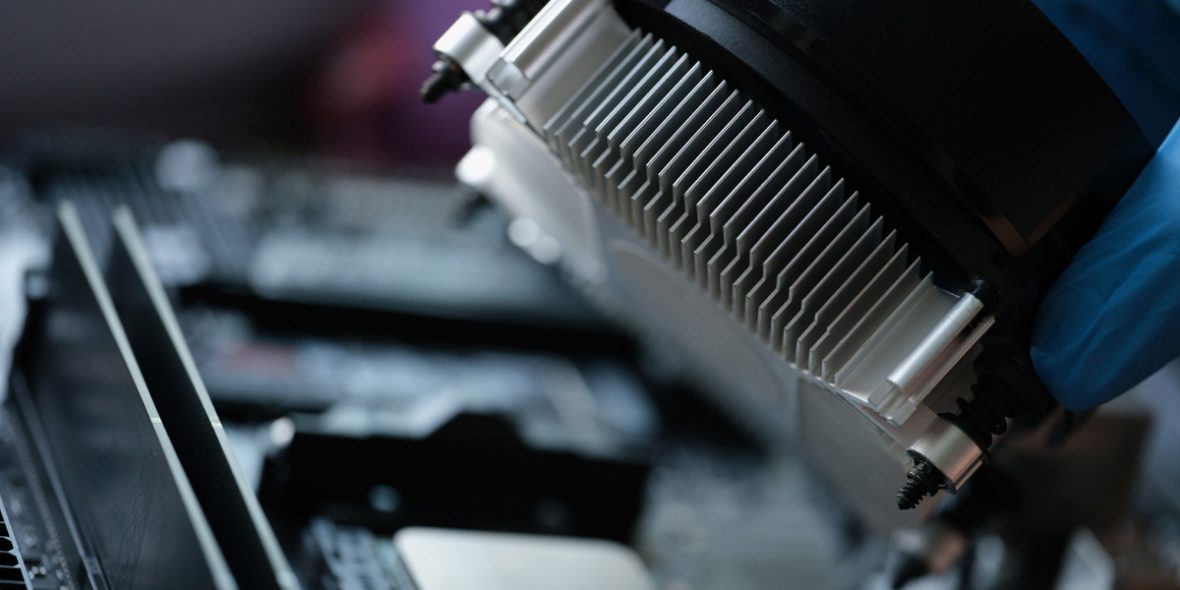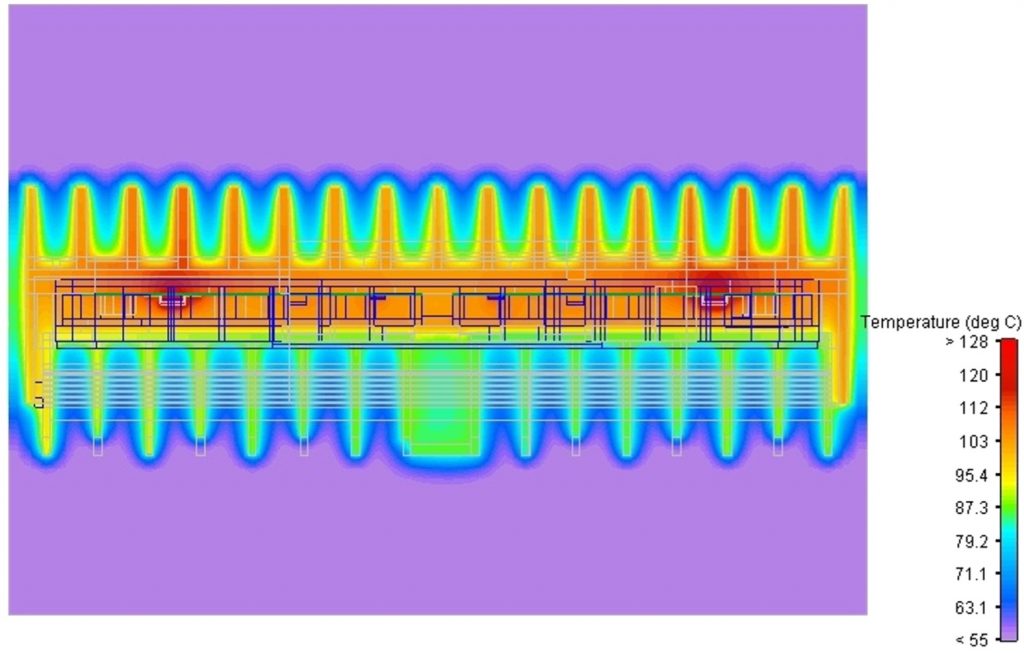
The team at Warley Design was performing thermal management long before being transferred out of Nortel Networks over twenty years ago. Having come from a background of packaging high-performing electronics it is one of the rather niche disciplines that is core to what we do.
There is a widely accepted rule-of-thumb in the electronics packaging world that for every 10°C reduction in temperature the expected lifespan of electronic hardware doubles. Whilst this may seem overly simplistic it does illustrate the importance of ensuring that the cooling system is as effective as it can be.
It is not uncommon for us to be approached by electronic hardware companies who have an established portfolio of products that have been proven to work adequately well, but now are facing new performance challenges. The ever-increasing demand on hardware in the form of capability / throughput / speed / capacity has been met head-on by an opposing drive for miniaturisation which amounts to a seemingly never-ending cycle of increased thermal density. Let’s face it: no-one is ever likely to up-grade a switch, computer, server or radio for a larger, heavier and more expensive one with poorer performance.

Another common scenario is one where there is an opportunity to sell a product into a new market, where ambient conditions (including altitude & solar gain) are different. An example is when a fan-cooled unit is to be deployed in an environment where a fan is undesirable, such as in a broadcast studio (where silent operation may be necessary), or perhaps when a unit needs to be sealed to prevent ingress of sand or water. Situations like this warrant a complete re-think to the overall thermal management approach.
Thermal management is much more than merely running a simulation and making a performance prediction, although this is indeed a very important part of it. Thermal management is setting-out the strategy that is most effective for dealing with the cooling, then executing that strategy to deliver a solution that best fits all technical and commercial challenges.
Popular mechanical 3D CAD systems such as SolidWorks and CREO now come with excellent integrated simulation tools that have been designed to be easy to use by non-expert users. We find these tools to be at least as good as the heavy-weight (and expensive) stand-alone specialist tools that we used to use and in fact the electronics cooling module that bolts-on to SolidWorks is now our tool of choice for all our steady-state analysis work.
For the solution to be the “best fit” the engineering has to be done at a more architectural level where key decisions are made to set the solution down the right path, long before detailed mechanical and PCB layout geometry is painstakingly created.
It follows then, that thermal management starts with gaining an understanding of the physical, technical, environmental and commercial requirements and performing some preliminary calculations to determine what cooling strategy could potentially be most effective in terms of performance and cost. For us the most influential part of thermal management is performed using spreadsheets and good old-fashioned formulae that have been taught to engineering students for decades and have stood the test of time.
I will never forget a Chief Engineer (and thermal guru) that I worked under on the development of a mobile phone transmitter / receiver between 1994 -1996. The mechanical team was under extreme pressure to deliver a packaging solution and the combination of dissipated power, solar gain, natural convection cooling regime & size constraints was proving to be an impossible challenge. Something had to give and the message was going to be uncomfortable for Senior Management to hear. In his presentation to senior management the Chief Engineer said in his very best Scottish accent “Ye cannae change the laws of physics!” We knew it was absolutely true then, and it still is today.
For more details on our thermal management services and expertise, call us now on Tel: +44 (0)1277 261066 or email us at info@warleydesign.co.uk